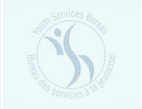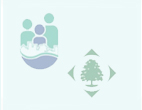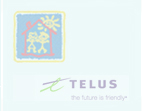









Keeping people safe & well
|
Community Assessment
Overview
A neighborhood assessment is at the heart of the planning process to develop a local No Community Left Behind (NCLB) strategy. The steps involved in conducting an assessment would not only enable the community and the Steering Committee to examine the resources that exist within the community (e.g., buildings and programs), but also provide an ideal forum to broaden the engagement of community members by soliciting their ideas, concerns and priorities relative to their vision for the community. Most importantly, the present information would become a benchmark for measuring future progress through regular assessments and reviews.
Vision
A community assessment would focus on identifying both assets and needs. Examples of community assets range from strong resident-led organizations to quality housing and overall environment.
An asset can be any resource that is making or has the potential to make a positive impact on the community. A neighborhood assessment that involves the community members and other area stakeholders who may not have worked together before would provide a strong bridge-building tool.
In every community, there are community members who are knowledgeable about a range of issues, including the history of the neighborhood, past programs or strategies that have been executed and concerns that have been expressed by community members.
These individuals are often viewed as community leaders, although they may not be the heads of formal organizations. All communities have some assets that need to be recognized and considered in developing a plan of action for change. Although the number of assets in a distressed area may be lower than in other areas, these assets exist. It would be important to identify them before planning the local strategy. Some assets may only be recognized by local community members, rather than listed in official reports.
A systematic community assessment would involve gathering and analyzing information about a wide range of neighborhood characteristics, problems and resources. It would not be limited to a review of criminal activity; rather, it would also consider some of the underlying causes of crime and poor health, and the local resources that can be mobilized to combat them.
In addition, a community assessment would focus on all the resources that exist in a neighborhood — some of which are often taken for granted. For example, most neighborhoods have community members of all ages. Many of the senior community members may have lived in the neighborhood for many years and are well known throughout the community; they know the neighborhood history and can contribute ideas about resources. They are an important asset that cannot be overlooked, particularly as the project moves toward developing goals for community policing and the health related components of the No Community Left Behind strategy.
A comprehensive community assessment would be critical in evaluating the NCLB effort. It would provide baseline information — a description of the community and its crime-related, social and economic challenges before the intervention of NCLB project. Although it will not always be possible to prove that changes are a direct result of No Community Left Behind project, accurate documentation of neighborhood conditions at the beginning would be essential for measuring effectiveness later.
Implementation Process
- Identifying Sources and Type of Information
- Taking Neighborhood Inventory
- Developing a Crime and Asset inventory
- Identifying Resources
- Resources Inventory
A Safety Survey has recently been conducted to assess perceptions feelings about crime, safety and violence in the community. CLICK HERE for a summary of its report. Also see Inventory of Resources at Banff Community, which is part of the assessment process:
a) classified by lead partners and
b) classified by population groups
c) CPTED Study (Please contact for access to this document)











©
2005-15 South - East Ottawa Community Health Centre
Centre de Sante Communautaire du Sud Est D'Ottawa
Contact: Abid Jan Tel./ Tél: (613) 737-5115 Ext. 2403 Fax/Télé: (613) 739-8199
NCLB matters because neighbourhoods matter

